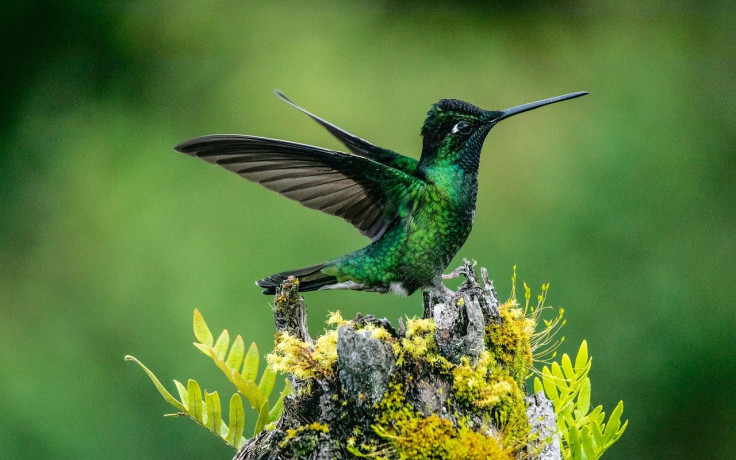These Female Hummingbirds Don Male-Like Plumage To Avoid Harassment
KEY POINTS
- Male white-necked jacobin hummingbirds retain their bright colors
- Females develop more muted green and white plumage
- However, some 30% of females retain bright-colored male-like plumage
- Ornamentation helps them avoid harassment and eat more: Researchers
Hows does one avoid being harassed by others? For some female hummingbirds, the key is to look like their male counterparts.
White-necked jacobin hummingbirds all start out with male-like plumage, the researchers of a new study, published Thursday in the journal Current Biology, said. This means all the juveniles have the bright blue plumage of the males. However, females eventually develop more muted green and white plumage while the males retain their bright colors.
This in itself is rather unique, since in "most other bird species," the juveniles tend to take on the female plumage as juveniles "presumably to be less obvious to predators," study lead author Jay Falk, formerly of the Cornell Lab of Ornithology and now of the University of Washington, said in the Cornell Lab of Ornithology news release.
But in the case of the white-necked jacobin hummingbirds, they don't just start out with the male plumage. Some females even retain the bright male-like colors. According to the researchers, this trait has also been observed in other animals, such as lizards, fish and butterflies.
In fact, when the researchers captured and released 436 specimens of the species in Gamboa, Panama, they determined 28.6% of the females actually had the male-like plumage.
Why do they retain this coloration? Ornamentation can typically be explained by sexual selection, but there is also "increasing evidence" of non-sexual factors behind this, particularly in females, the researchers noted. For the female white-necked jacobin hummingbirds, they develop bright colors during their adolescence, when they are not yet looking for mates.
"This unique ontogeny excludes competition for mates as an explanation for female ornamentation because non-reproductive juveniles are more likely to be ornamented than adults," the researchers wrote.
To find the possible benefit of such ornamentation to females, the researchers set up taxidermy hummingbird specimens on feeders during the breeding season and watched how the real hummingbirds interacted with them, Cell Press noted in a news release.
The stuffed specimens were of adult males, typical adult females and adult females that looked like the males, The Cornell Lab of Ornithology noted.
Interestingly, the researchers found that the hummingbirds with more muted colors were harassed more than the females with male-like plumage. Because of this, the females with the male plumage got to feed about 35% longer than the typical females.
"For species with the highest mass-specific metabolic demands of any vertebrate, selection on traits that maximize feeding in the face of intense resource competition from any other bird — regardless of sex or species — may explain why female-limited polymorphism has evolved so often in hummingbirds, yet so rarely in other avian species," the researchers wrote.
Simply put, "avoidance of social harassment" seems to be the underlying reason for the ornamentation. According to the researchers, this is an indication that such ornamentation can occur "purely through nonsexual social selection."
Some female Jacobin #hummingbirds crossdress as males to make their lives easier and evade male harassment.
— Current Biology (@CurrentBiology) August 26, 2021
🪶🕊️
by @JJinsing @DustRubenstein & colleagueshttps://t.co/eUD88sTtDc
"Hummingbirds are such beloved animals by many people, but there are still mysteries that we haven't noticed or studied," Falk said as per Cell Press. "It's cool that you don't have to go to an obscure unknown bird to find interesting and revealing results. You can just look at a bird that everyone loves to watch in the first place."

© Copyright IBTimes 2024. All rights reserved.






















